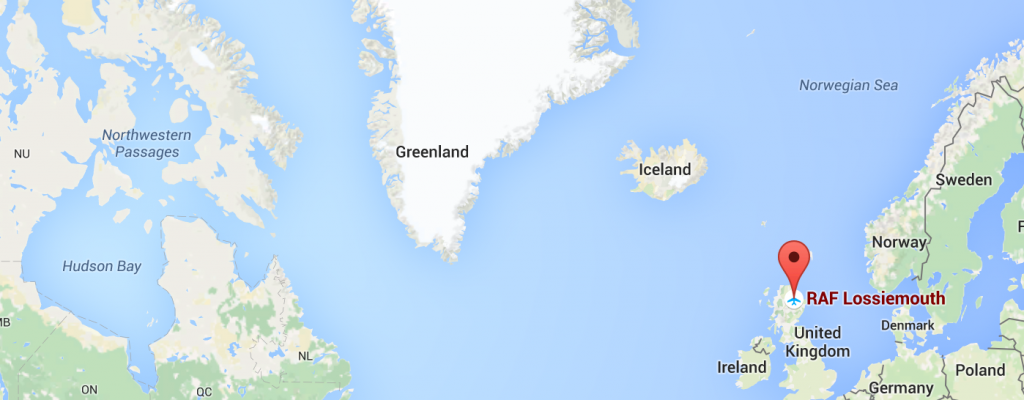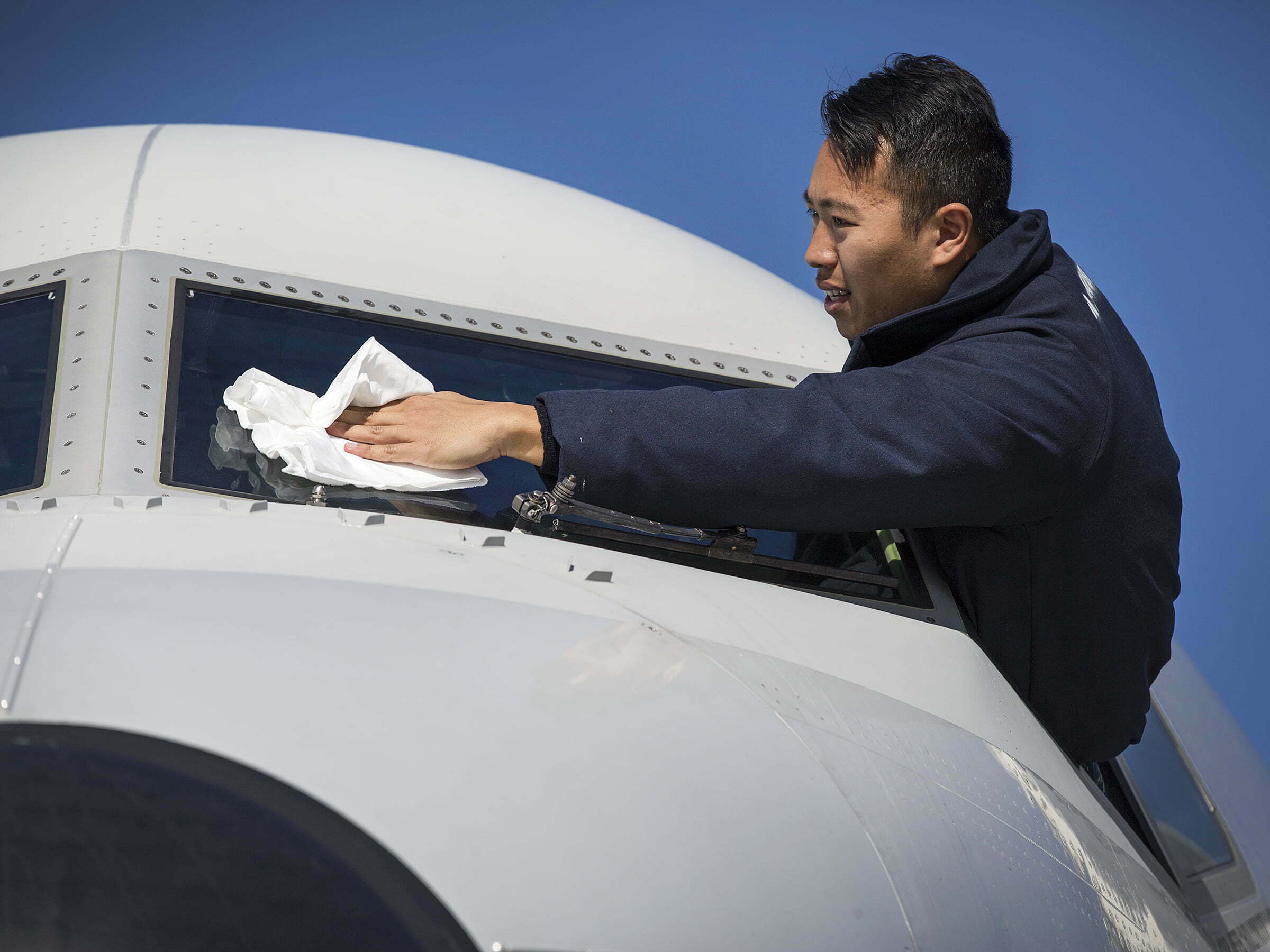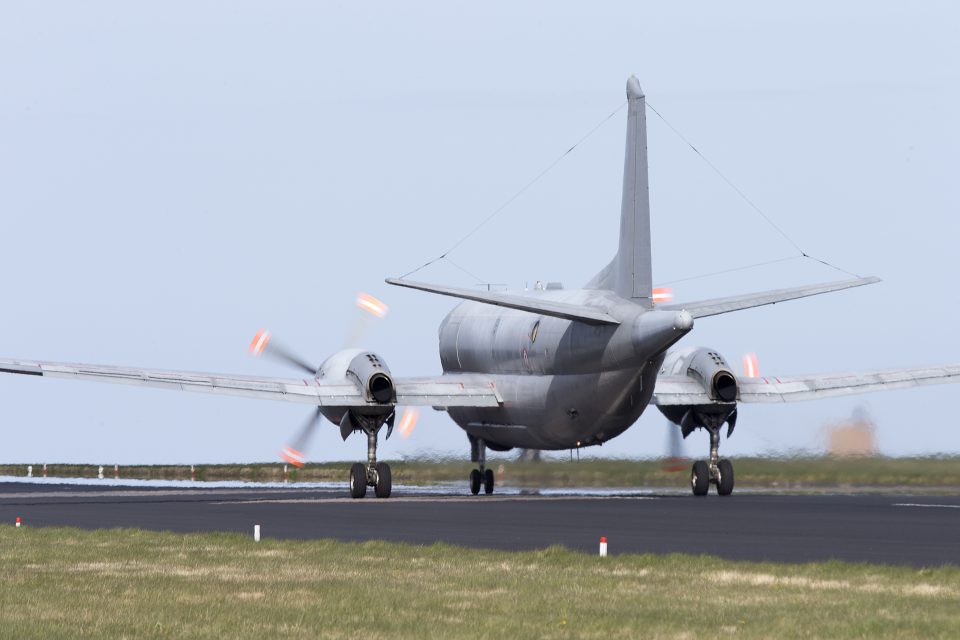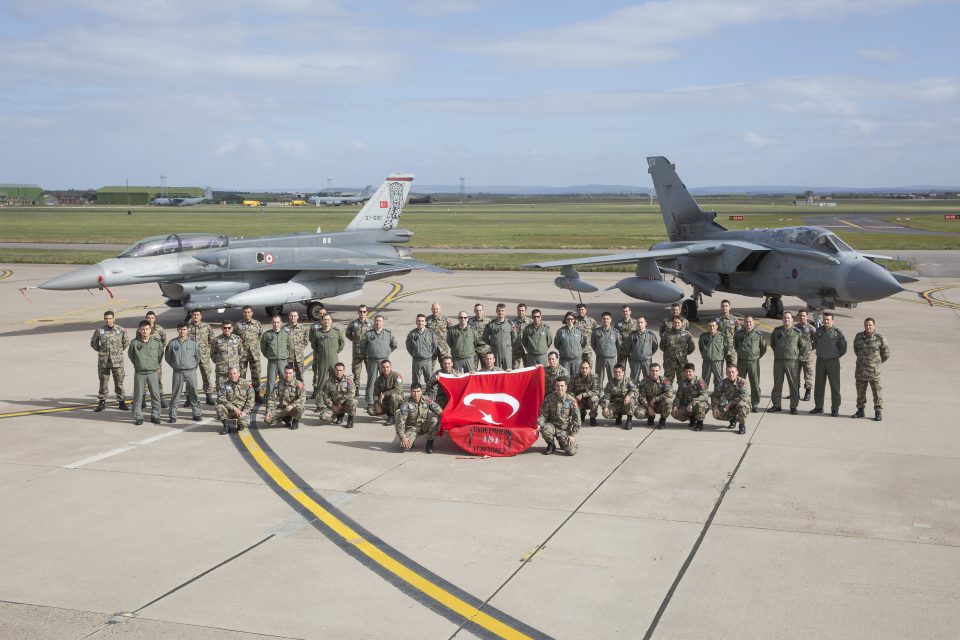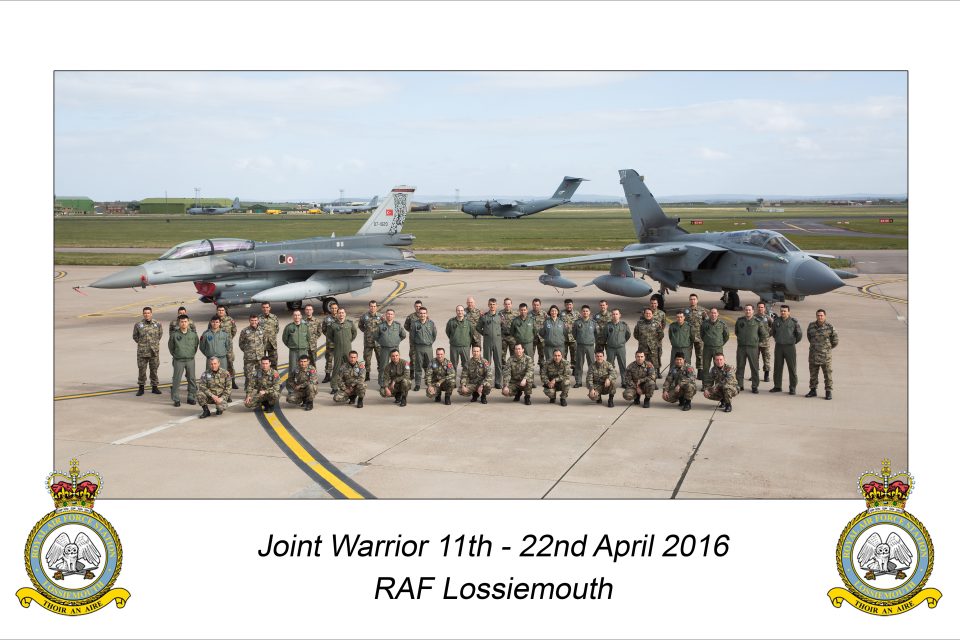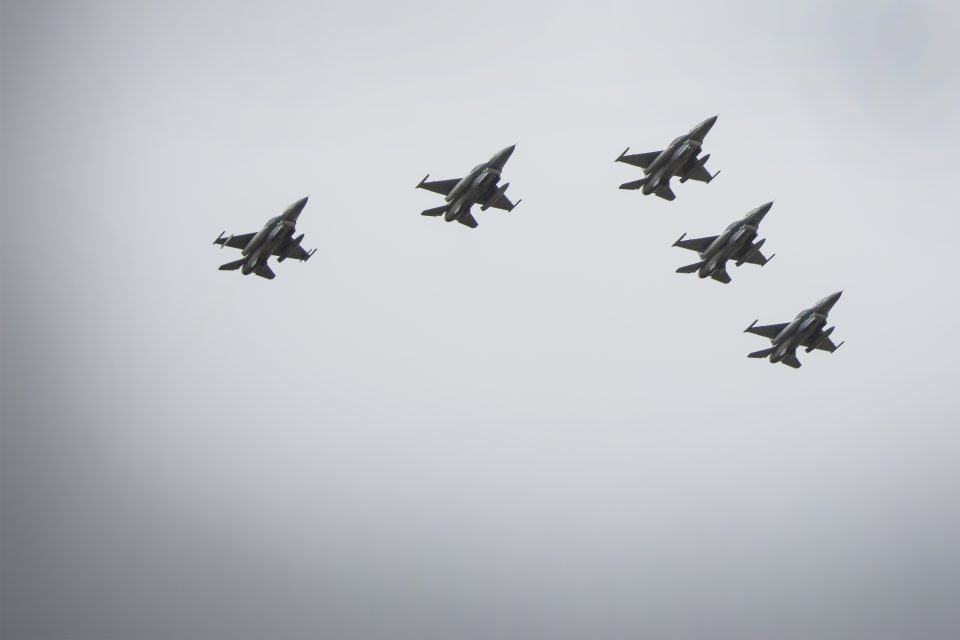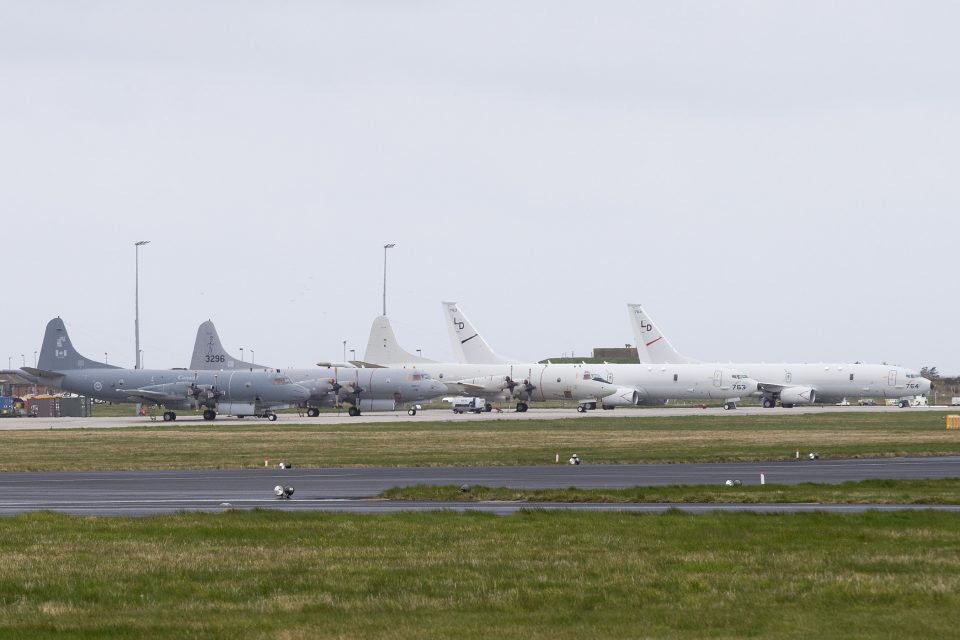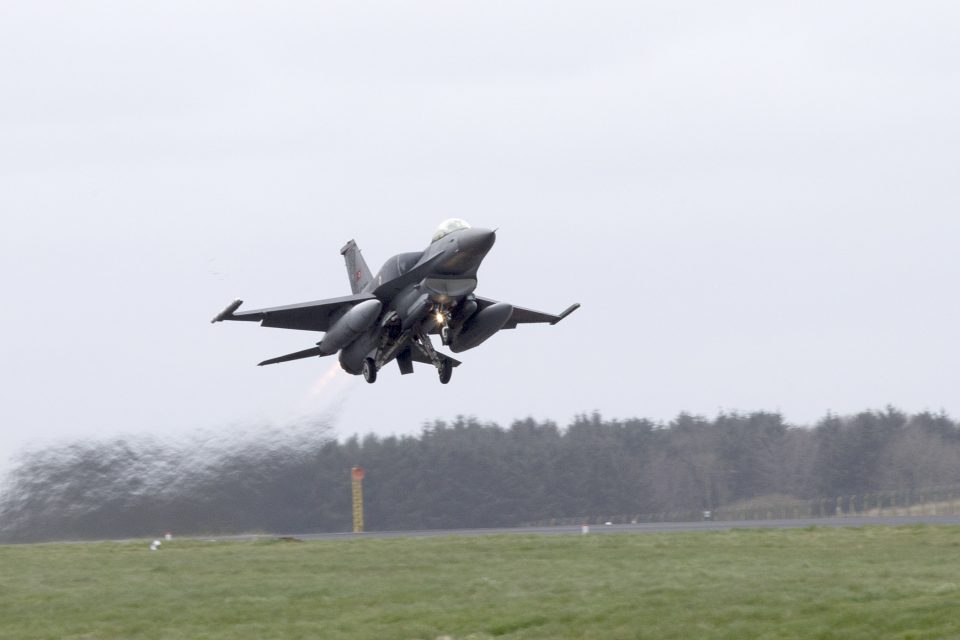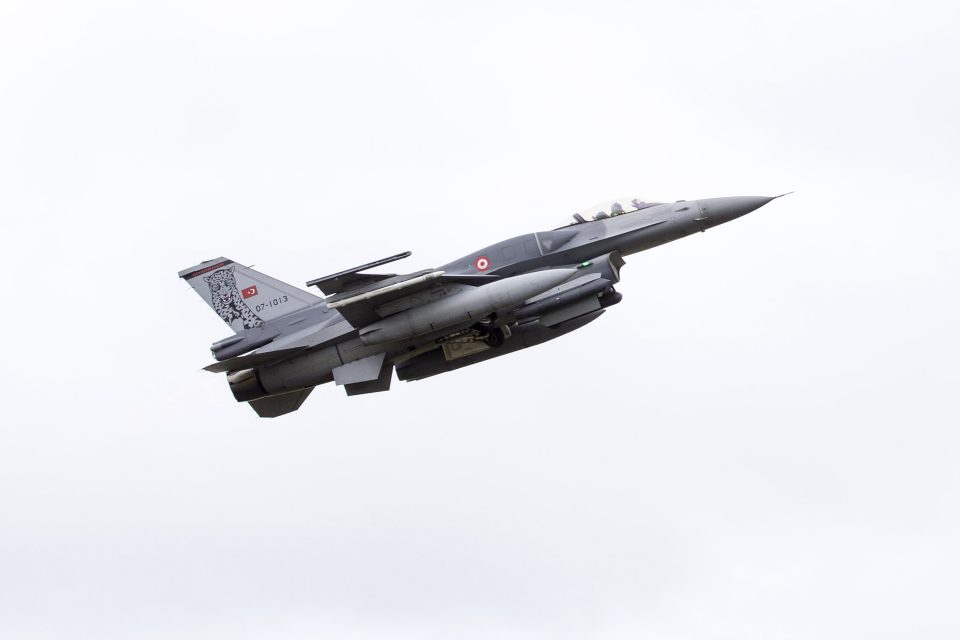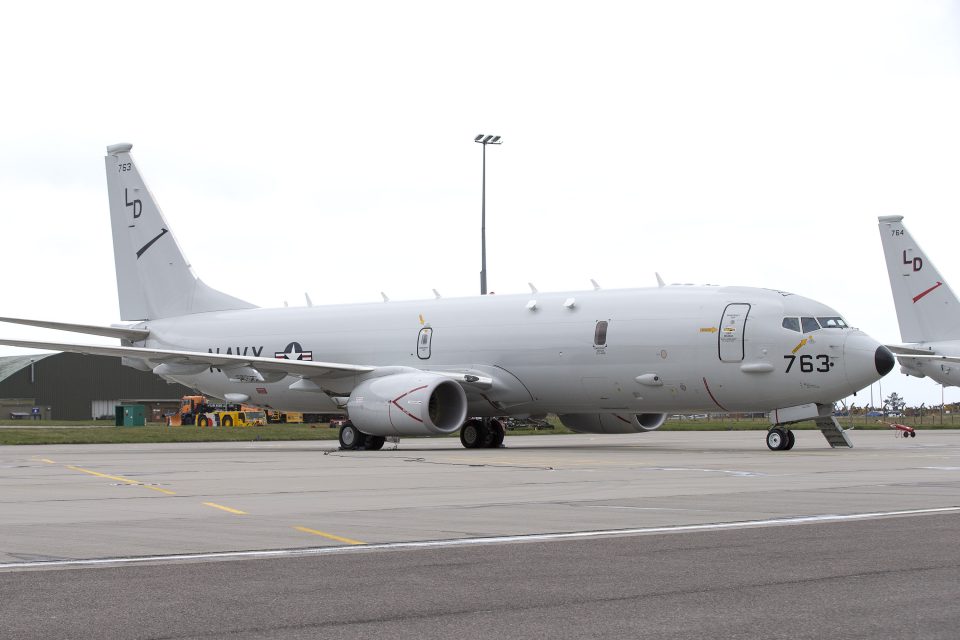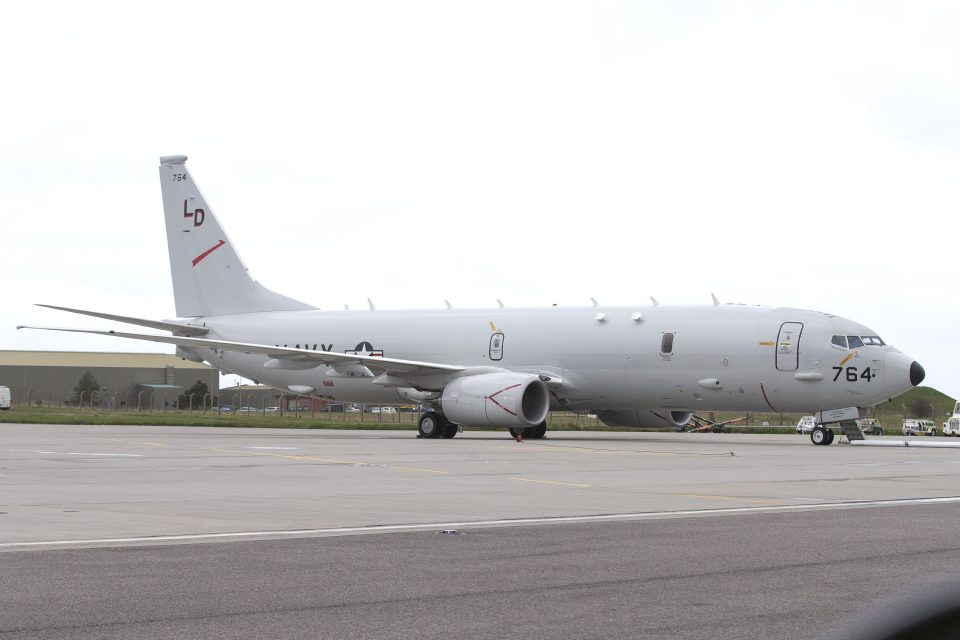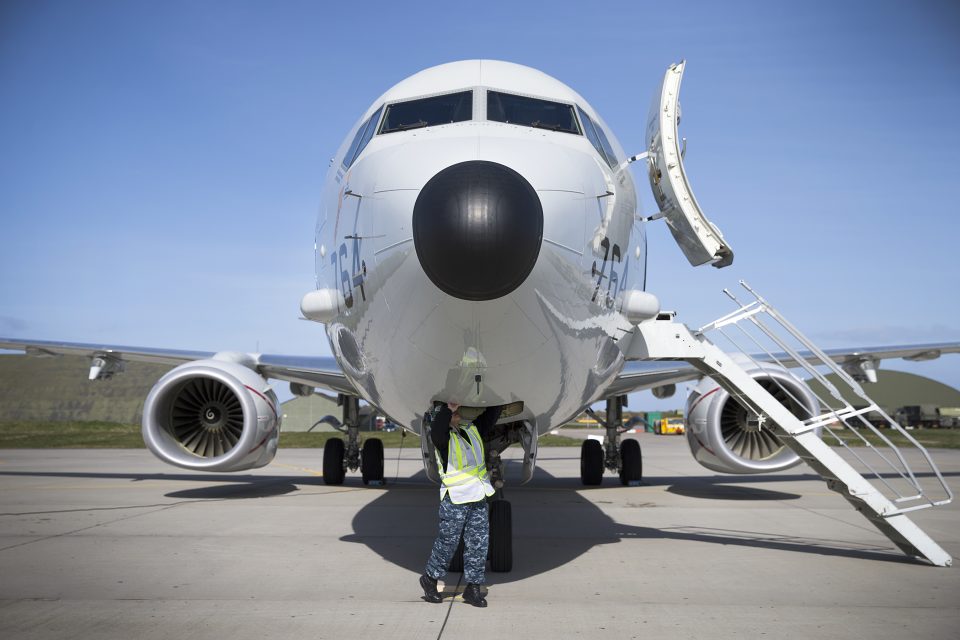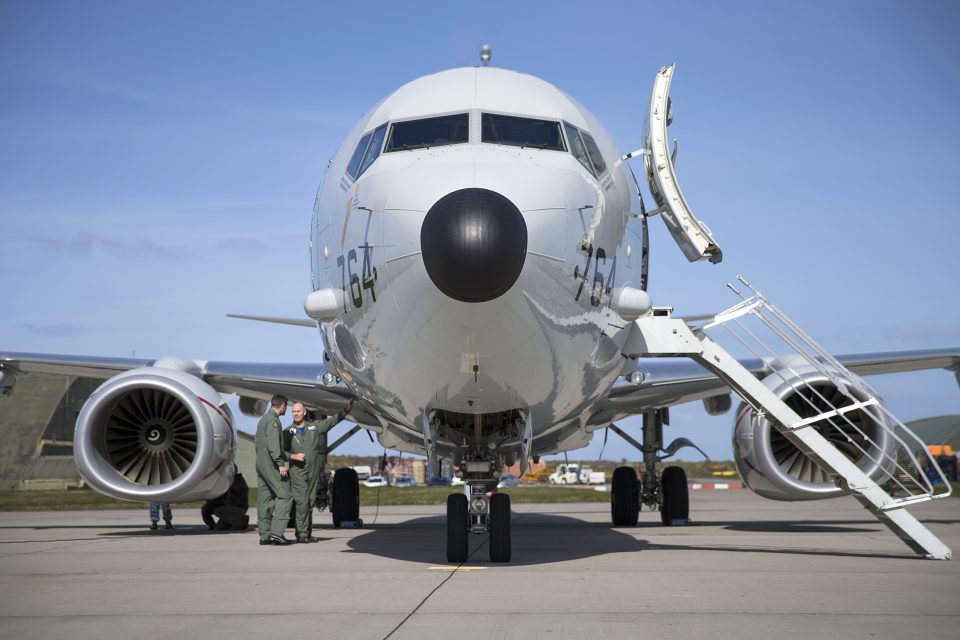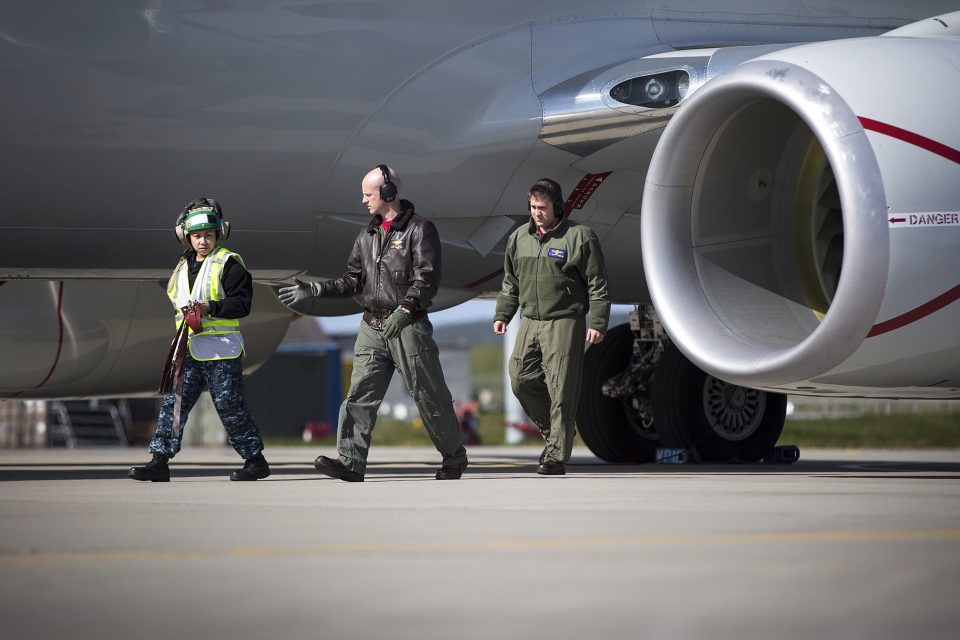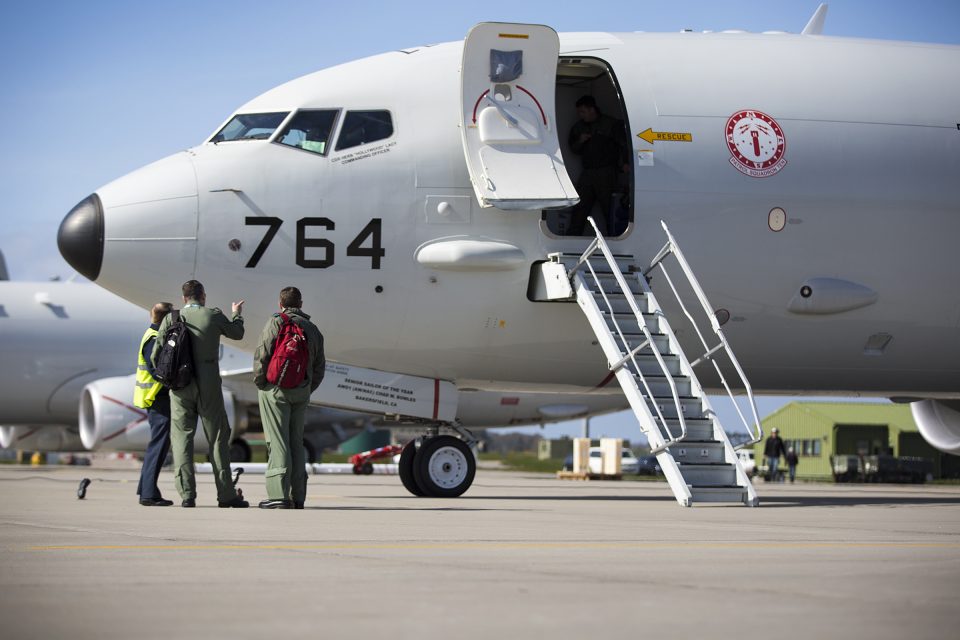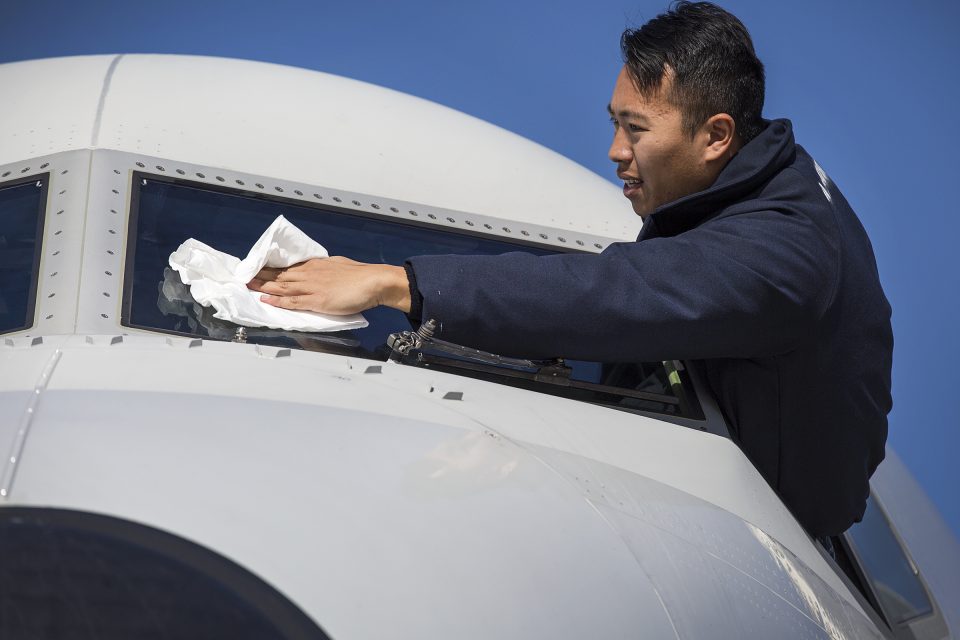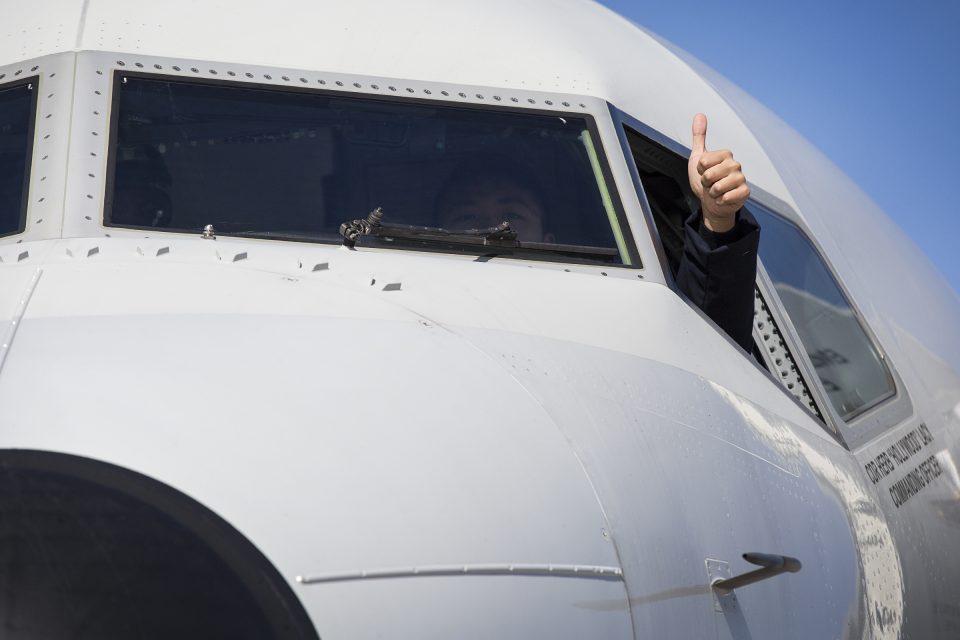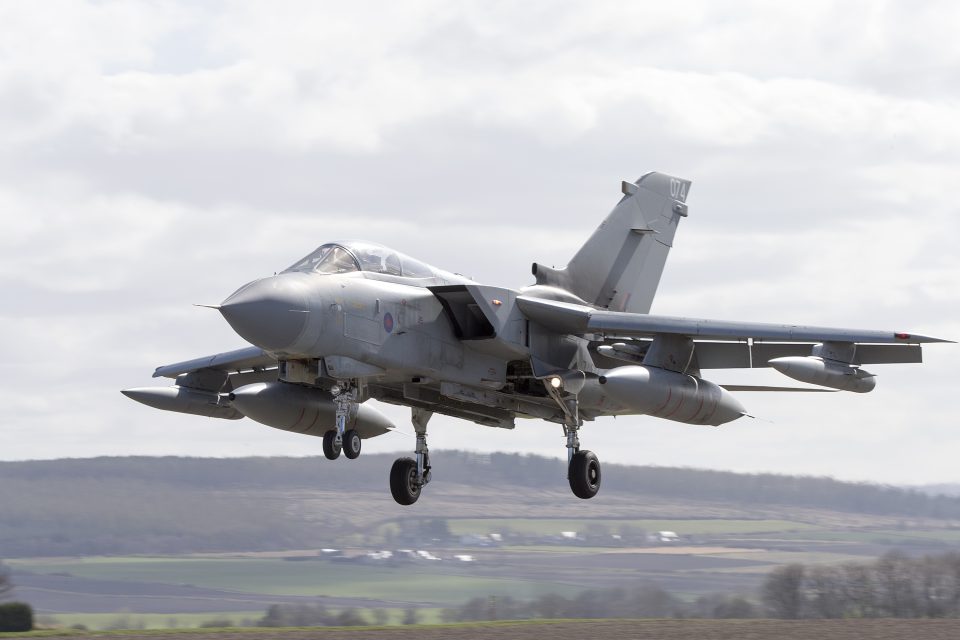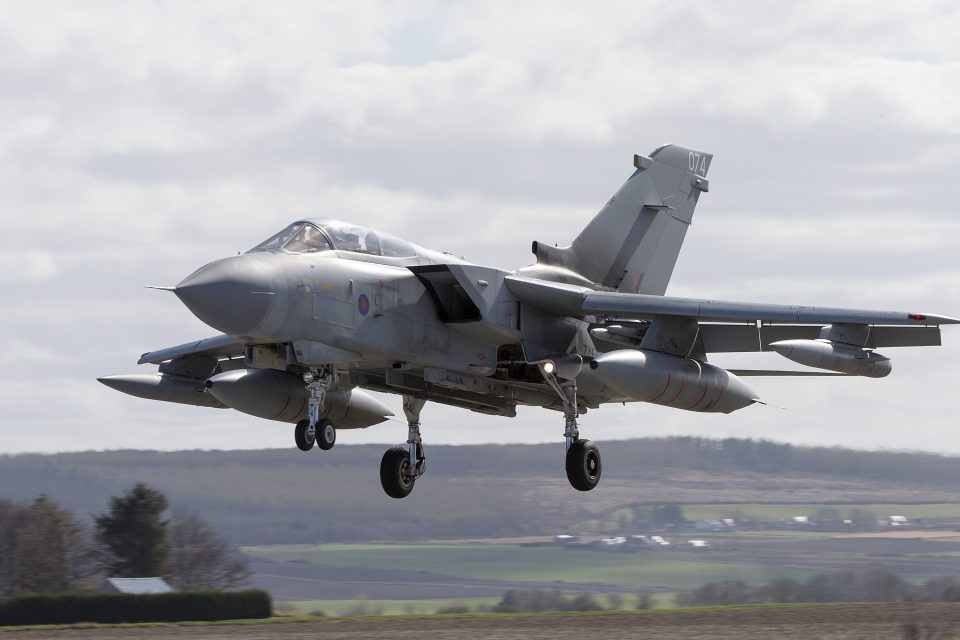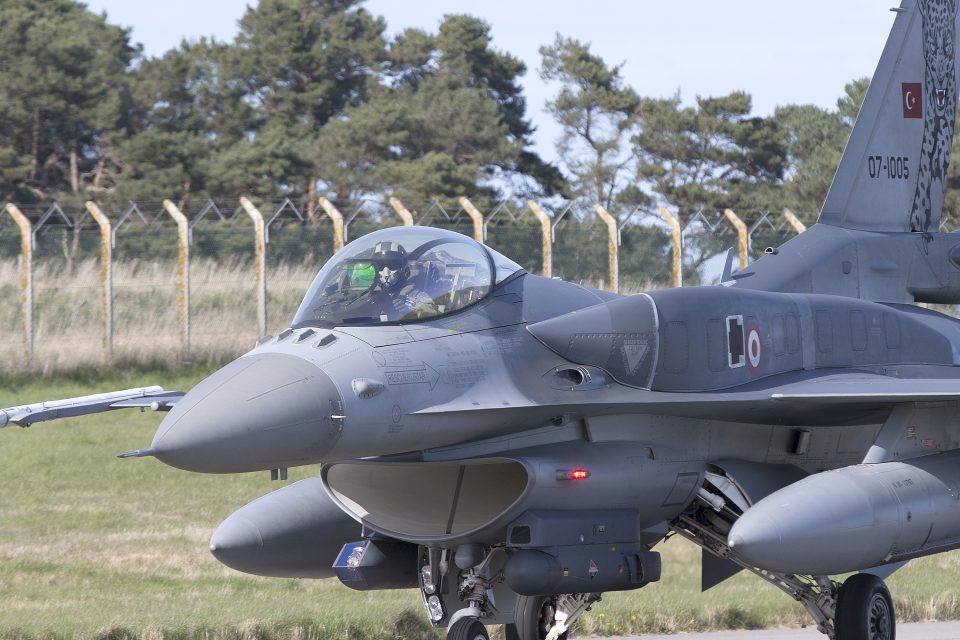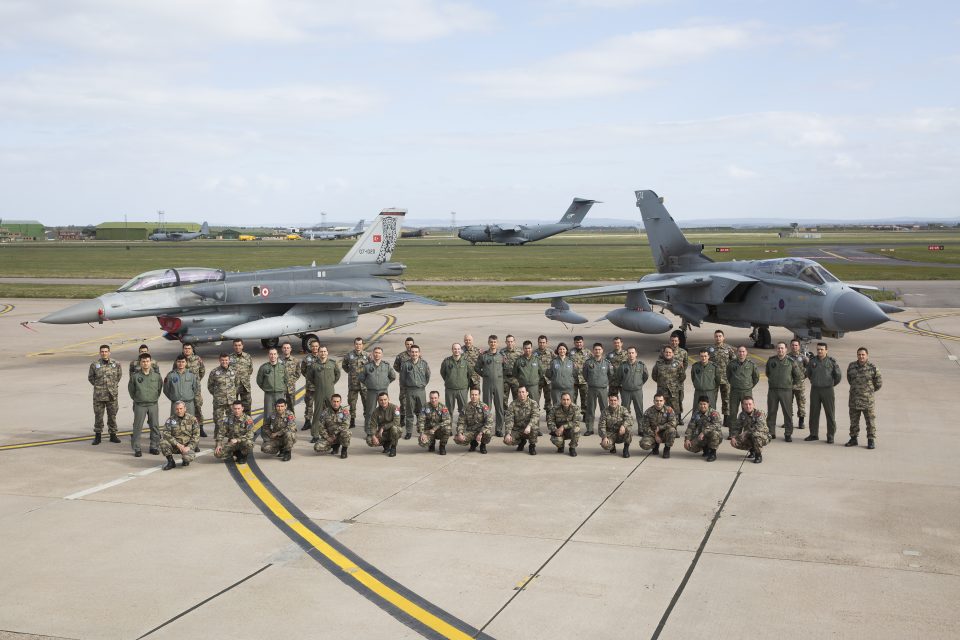2016-04-28 By Robbin Laird
It seemed a bit odd to be looking at the North Sea on April 24th, after looking at the Pacific over my right while driving up from Sydney to Williamtown Air Base on March 23rd.
It was also considerably colder, and reminded one of why the Scots make scotch in the first place. They have great water, barley and a weather that requires drinking scotch.
In between, we had a chance to talk with the Northcom/NORAD Commander who lives roughly half way between these two airbases.
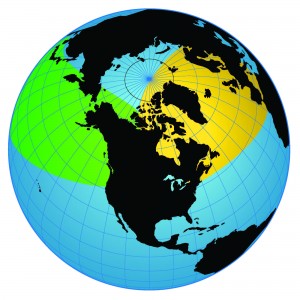
What Admiral Gortney highlighted when we visited him in Colorado Springs was the threat to North America from the 10 and 2 O’Clock positions.
When you are at Lossie you are clearly in the center of the 2 O’ Clock threat envelope, which for the Brits is clearly about the defense of their homeland.
RAF Lossiemouth currently is a Typhoon and Tornado base, but with the Tornados to be phased out within the next few years, the Typhoons will be joined by the P-8, which will probably operate as well from Lossie.
This provides the opportunity to integrate the Typhoons with P-8s with the F-35s, which will operate off shore from the new carriers or, in other words, shaping a kill web to protect the homeland and to anchor the defense of the Northern NATO countries.
In effect, Lossie will train to support the formation and evolution of a 21st century combat force in which a multi-mission combat fleet of Typhoons will work with the maritime-focused but land-based capable maritime combat system which is the P-8 (which will operate in the area, regardless of the final decision concerning where to base the fleet), and which, in turn, will work with the multi-tasking flying combat system which is the F-35.
In forthcoming interviews, we will discuss the roll out of a 21st century base approach, the key role of Typhoon for the RAF and both the challenges and opportunities inherent in its modernization,and the impact of the Tornado and its legacy upon the evolution of the 21st century combat fleet.
Recently, Lossie hosted aircraft and personnel participating in Joint Warrior 2016.
According to an April 8, 2016 story published by the BBC:
Exercise Joint Warrior is held twice a year – in April and October – for thousands of army, navy and air force personnel.
The training will see increased military activity at Faslane on the Clyde, RAF Lossiemouth in Moray and ranges at Cape Wrath in Sutherland.
The exercise runs until 23 April and will involve submarines, surface ships and aircraft including RAF Typhoons.
Warships and aircraft have already started arriving in Scotland ahead of the start of the training.
This year’s second staging of Joint Warrior, which will also take place in Scotland, will include what the Royal Navy has described as its first “robot wars”.
Unmanned Warrior 2016 will involve drones, including unmanned aerial vehicles and machines that can operate underwater.
And according to the UK MoD website published April 11, 2016 prior to the exercise:
RAF Lossiemouth is set to host a small contingent of international Maritime Patrol Aircraft (MPA) and F-16 fast jets for Exercise Joint Warrior 16-1 which will take place from the 11th to the 22nd of April.
Exercise Joint Warrior is a tri-service and multinational exercise conducted in the UK during the spring and the autumn of each year. The exercise will involve more than 31 warships and submarines, 60 aircraft, and a total of around 6,500 personnel from the 14 participating nations.
This year RAF Lossiemouth will be hosting MPA aircraft such as the P3 Orion, Atlantique and the new P-8 Poseidon which is planned to be based in Moray. RAF Lossiemouth’s Typhoons will also take part in the Exercise alongside a detachment of Turkish F-16s.
Flight Lieutenant Guy Radcliffe, the Exercise Operations Officer at RAF Lossiemouth, said:
“The hosting of these Exercise participants will involve every section at RAF Lossiemouth. In order to facilitate each visiting units’ individual requirements for the Exercise, planning has been ongoing since last year to ensure that we are ready.
“It will be an extremely busy fortnight for the Station and the airfield itself. Particular challenges will involve working with different coalition countries, operating large aircraft from an airfield which is set up for much smaller, fast jets and fitting it all around RAF Lossiemouth’s own ongoing high operational tempo, essential training and QRA.”
The aircraft from the Canada, Germany, France, Norway, Turkey and the US will begin arriving at RAF Lossiemouth in the weeks leading up to the Exercise…..
Normally RAF Lossiemouth operates its flying programme from 0800 to 2300, however during this Exercise some night flying may take place out with this period.
The slideshow below shows some of the aircraft involved in the exercise and have been provided by RAF Lossiemouth during my visit and are credited to them.
RAF Lossiemouth has entered another significant period of its history.
The Station remains an important fast jet main operating base within the Royal Air Force, with both Tornado and Typhoon squadrons based here.
RAF Lossiemouth remains the home to the Tornado GR4 Operational Conversion Unit, XV (Reserve) Squadron, who train all Pilots and Weapons Systems Operators to operate the Tornado GR4.
During the summer of 2014 two Typhoon squadrons, 6 Squadron and 1 (Fighter) Squadron, relocated to RAF Lossiemouth. The Station’s third Typhoon squadron, II(Army Co-operation) Squadron relocated from RAF Marham in early 2015.
As part of the changes, the Station assumed Quick Reaction Alert (Interceptor) North (QRA(I)N) duties from September 2014. RAF Lossiemouth is now primarily responsible for maintaining QRA(I)N – providing crews and aircraft at high states of readiness 24 hours a day, 365 days a year, to police UK airspace and to intercept unidentified aircraft.
Additional units at RAF Lossiemouth include No 5 Force Protection Wing of the RAF Regiment. 5 Force Protection Wing includes a regular field squadron, 51 Squadron RAF Regiment, and a reserve squadron, 2622 Squadron of the Royal Auxiliary Air Force Regiment
